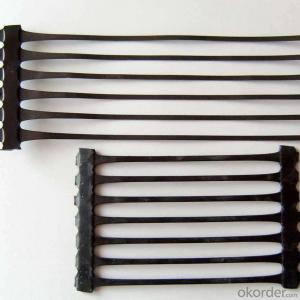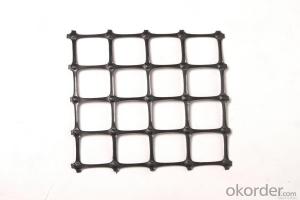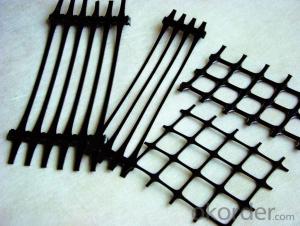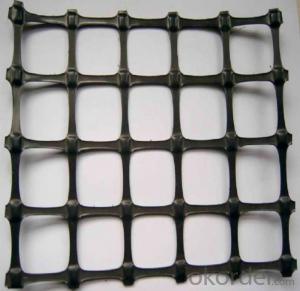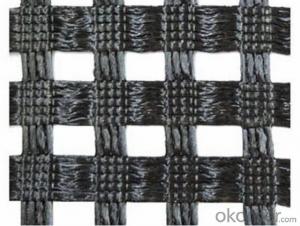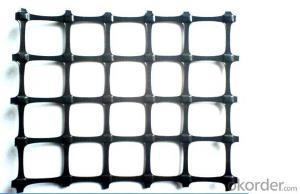Fiberglass Geogrid 100KN/100KN for Constructional Reinforcement
- Loading Port:
- Shanghai
- Payment Terms:
- TT or LC
- Min Order Qty:
- 50000 m²
- Supply Capability:
- 2000000 m²/month
OKorder Service Pledge
OKorder Financial Service
You Might Also Like
1.Description of Fiberglass Geogrid 100KN/100KN
CMAX fiberglass geogrid is made from glass fiber by weaving technology and coating treatment.
2.Specification of Fiberglass Geogrid 100KN/100KN
Tensile Strength: 25-25KN; 30-30KN; 50-50KN; 80-80KN; 100-100KN; 120-120KN;
Road Size: 3.95x100m; as customer required;
3.Technical Data Sheet of Fiberglass Geogrid 100KN/100KN
Item | CMAX30-30 | CMAX50-50 | CMAX80-80 | CMAX100-100 | CMAX120-120 | CMAX150-150 | |
Mesh Size(mm) | 25.4 x 25.4 or 12.5 x 12.5 or 50.8x 50.8 | ||||||
Breaking strength | Warp direction | 30 | 50 | 80 | 100 | 120 | 150 |
Across warp | 30 | 50 | 80 | 100 | 120 | 150 | |
Elongation at break % | Warp direction | 4 | |||||
Across warp | 4 | ||||||
Thermal tolerance (℃) | -100 ~280 | ||||||
Width(m) | 6 | ||||||
4.Property of Fiberglass Geogrid 100KN/100KN:
1). High strength, low elongation;
2). Heat-resistant, high modulus.
3). Light weight, good flexibility.
4). Anti-erosion, long life time.
5.Application of Fiberglass Geogrid 100KN/100KN
1). Roadbed reinforcement, prevent road surface crack.
2). Road reconstruction
3). Soft soil reinforcement, improve road whole bearing capacity and prevent crack.
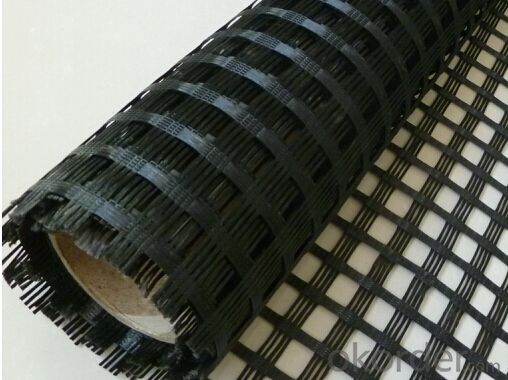
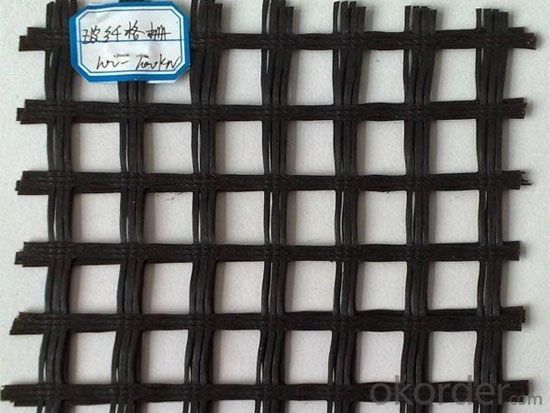
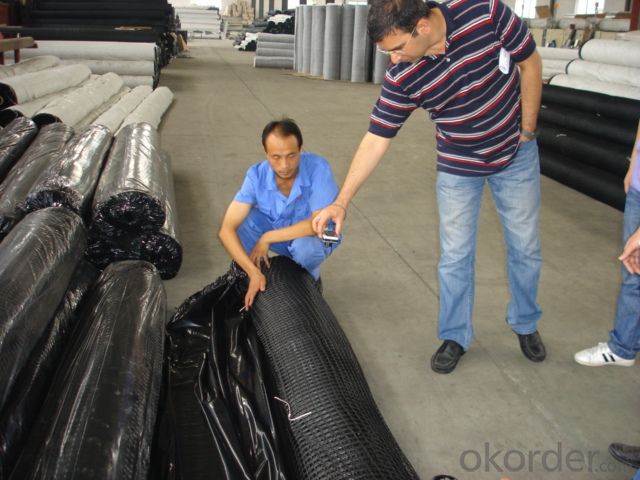
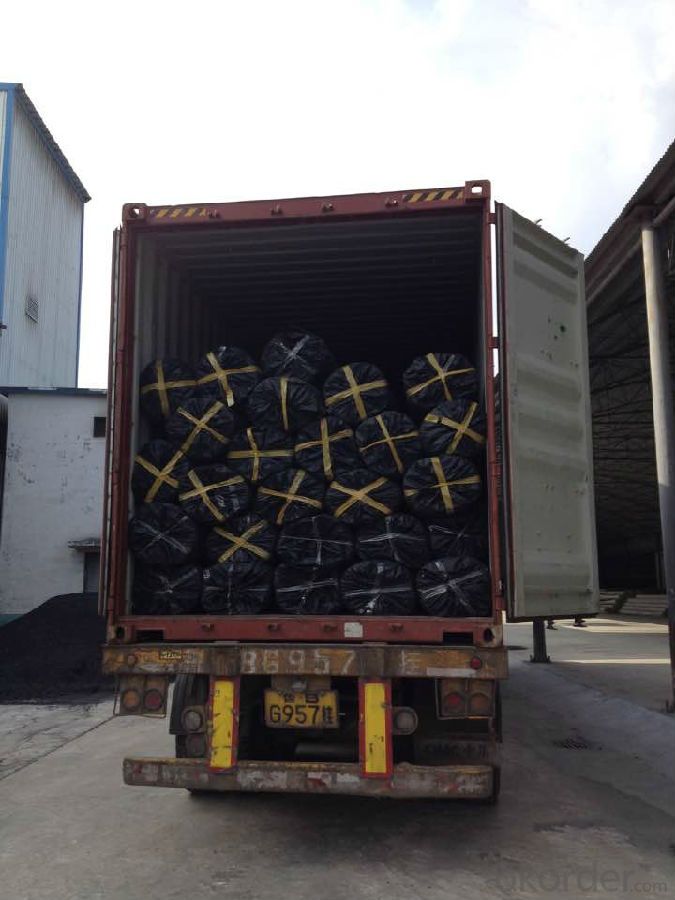

FAQ :
1. What are we supplying?
We are specialized in producing Geosynthetic materials, like Geogrid Series, HDPE Geocell, Geonet, Geotextile, Geomat, Tri Denmensional Composite Grainage Geonet, and Geomembrane Series.
.
2. How Many years experience do we have?
We have been exported to more than 20 countries in the past 15 years.
3. How long do we usually reply your request?
We always reply our customer within 24 hours.
4. Do you accept third party test?
Yes, we can accept any third party test before shipment, like SGS, TRI, etc.
- Q:What are the environmental impacts of using geogrids?
- The environmental impacts of using geogrids can vary depending on factors such as their production, installation, and disposal. However, in general, geogrids can have positive environmental impacts. They can help stabilize soil and reduce erosion, which can prevent the loss of topsoil and decrease sedimentation in nearby bodies of water. Geogrids can also be made from recycled materials, reducing the demand for virgin resources. However, the use of geogrids may also have some negative impacts, such as the energy consumption and greenhouse gas emissions associated with their production and transportation. Additionally, if not properly disposed of, geogrids can contribute to plastic pollution. Overall, while geogrids offer numerous environmental benefits, it is important to consider their life cycle and proper disposal to minimize potential negative impacts.
- Q:Are geogrids suitable for reinforcement of mechanically stabilized earth retaining walls?
- Yes, geogrids are suitable for the reinforcement of mechanically stabilized earth retaining walls. Geogrids are specifically designed to provide strength and stability to soil structures, and they effectively distribute and transfer loads within the soil mass. By adding geogrids to a mechanically stabilized earth retaining wall, the overall structural integrity and resistance to lateral forces can be significantly enhanced, making them a reliable and effective solution for reinforcement.
- Q:What is the recommended depth of geogrid installation?
- The recommended depth of geogrid installation depends on various factors such as soil conditions, load requirements, and project specifications. However, a general guideline is to install geogrids at a depth of at least 12 inches below the surface to ensure sufficient reinforcement and stability.
- Q:What are the models and specifications of Geogrid for road
- There are many kinds of specifications for each grid, with reference to the national standard
- Q:Can geogrids be used in seismic zones?
- Yes, geogrids can be used in seismic zones. Geogrids are commonly used in geotechnical applications to reinforce soil and improve stability. They can help increase the resistance to lateral spreading and reduce the potential for damage caused by earthquakes in areas with active seismic activity. However, it is important to consider the specific design requirements and consult with engineers experienced in seismic design to ensure the proper selection and installation of geogrids in these zones.
- Q:What are the factors that affect the performance of geogrids under cyclic loading?
- The factors that affect the performance of geogrids under cyclic loading include the type and quality of the geogrid material, the design and installation of the geogrid, the magnitude and frequency of the cyclic loading, the soil properties and conditions, and the duration of the cyclic loading.
- Q:Water conservancy projects, the construction of the geogrid used in the quota which is not, how should the set of fixed price calculation of geogrid?
- Per 1000 square meters of the amount of the project is a fixed amount of 1100 square meters (including the overlap and loss)
- Q:Can geogrids be used in stormwater management?
- Yes, geogrids can be used in stormwater management. Geogrids are commonly used in stormwater management systems to reinforce soil, stabilize slopes, and retain sediment. They provide excellent erosion control and can enhance the overall effectiveness of stormwater management practices.
- Q:What is the overlap length of the two-way geogrid? What is the overlap length of geotextiles?
- It should be 20cm to 40cm, it's a little longer
- Q:What is the effect of junction strength on geogrid performance?
- The effect of junction strength on geogrid performance is significant. A stronger junction ensures better interlocking and connection between the geogrid's components, leading to enhanced load distribution and resistance against installation stress and long-term deformation. It allows the geogrid to effectively restrain and stabilize the soil, improving overall geotechnical performance and longevity.
1. Manufacturer Overview |
|
|---|---|
| Location | |
| Year Established | |
| Annual Output Value | |
| Main Markets | |
| Company Certifications | |
2. Manufacturer Certificates |
|
|---|---|
| a) Certification Name | |
| Range | |
| Reference | |
| Validity Period | |
3. Manufacturer Capability |
|
|---|---|
| a)Trade Capacity | |
| Nearest Port | |
| Export Percentage | |
| No.of Employees in Trade Department | |
| Language Spoken: | |
| b)Factory Information | |
| Factory Size: | |
| No. of Production Lines | |
| Contract Manufacturing | |
| Product Price Range | |
Send your message to us
Fiberglass Geogrid 100KN/100KN for Constructional Reinforcement
- Loading Port:
- Shanghai
- Payment Terms:
- TT or LC
- Min Order Qty:
- 50000 m²
- Supply Capability:
- 2000000 m²/month
OKorder Service Pledge
OKorder Financial Service
Similar products
New products
Hot products
Related keywords

